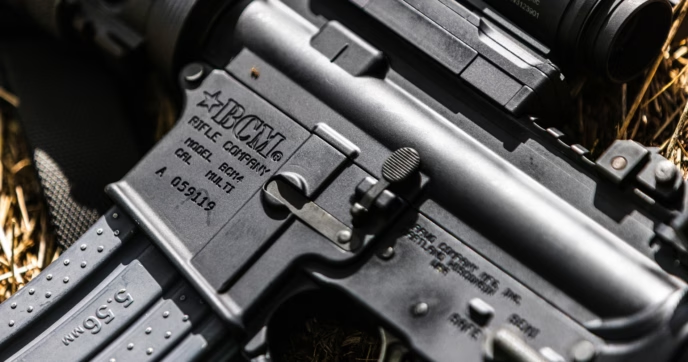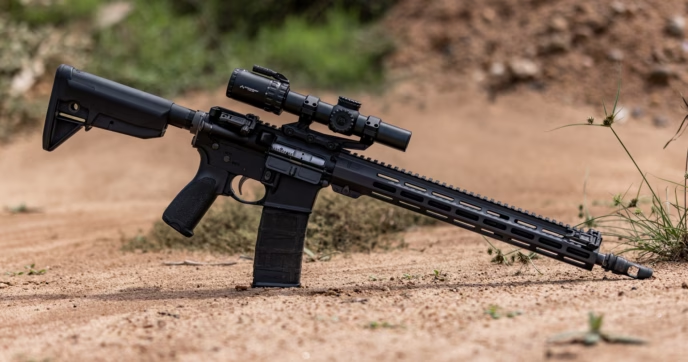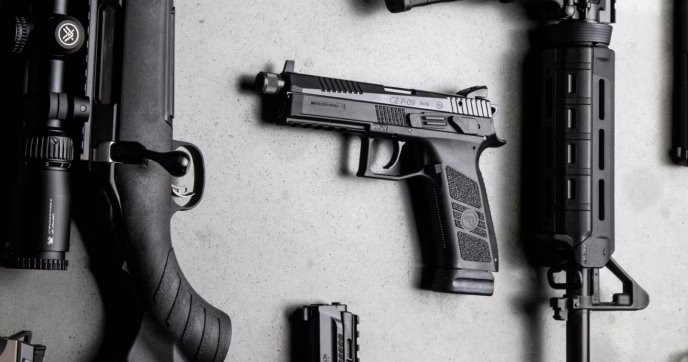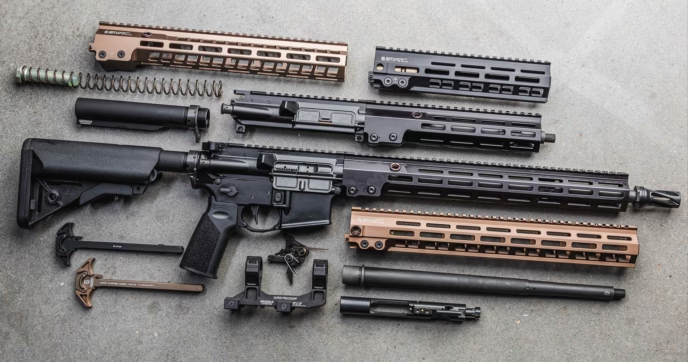Few companies can boast a history of innovation quite as robust as that of Walther Arms. From decockable, DA/SA striker-fired handguns to eclectic bullpup sniper rifles, Walther’s historical catalog of firearms is a smorgasbord of designs that were each groundbreaking in their time.
Now, Walther continues their track record of excellence by making some of the finest pistols on the market for every purpose from concealed carry to competition and more.
The History of Walther
Walther can trace their origins to the late 1800s, but they didn’t start manufacturing pistols until 1908. Prior to that, their business had been mainly hunting rifles, but it was their innovation with handgun design that would eventually make them a preeminent manufacturer.
While their first handful of models achieved little renown at the time, in 1929, Walther introduced the PP, which is short for police pistol. It would be followed a few years later by the PPKs, a detective model of the same firearm. The PP and PPKs both became immensely popular, kicking off a legacy of Walther pistols that would go on to include a long list of police, military, and civilian firearms.
Now, Walther remains one of the most respected firearms manufacturers on the market. They boast an impressive lineup of pistols, ranging from plinking and target pistols like the P22 to their truly exceptional Meister Manufaktur series, which exemplify excellence in gunsmithing.
Walther’s Modern Lineup
Walther’s history is long and venerated, but their modern lineup is what people care most about, and it’s equally impressive. While they have manufactured rifles and other firearms in the past, they are currently focused exclusively on handguns.

PDP
The most common of Walther’s modern firearms, the PDP is arguably the flagship of their catalog. It’s a cutting-edge striker-fired pistol widely lauded for it’s excellent ergonomics and diverse range of models.
The Walther PDP was designed for professional and personal defensive use from the start, so its ruggedness and reliability are unquestionable. Combined with Walther’s long history of excellence, it’s a gun you can have full confidence will perform when you need it most.
As a thoroughly modern pistol, all PDP models come optic-ready from the factory. Like many optic-ready handguns, the PDP uses a versatile plate system to adapt to a wide range of optics rather than milling the slide for direct compatibility with a single footprint.
The slide also features Walther’s interesting new take on serrations, which are raised out of the side of the slide rather than cut in. This allows for a more secure, aggressive grip, helping to prevent the possibility of slippage when your hands are wet or sweaty. The texture of the grip is similarly designed to maximize security and stability but uses a tetrahedron design to reduce chafing or irritation of the skin, further demonstrating its identity as a carry and duty pistol.
The heart of any pistol is always going to be the trigger, and Walther has equipped their PDP handguns with their new Performance Duty Trigger, which offers a shorter length of travel and clear, clean trigger break. It’s a trigger that feels match-grade, without sacrificing any of the performance of a duty pistol.
Triggers are one of the most common accuracy upgrades for your pistol, though, so it’s no surprise that Walther outfitted the Pro models of the PDP with an upgraded flat-faced trigger for even greater control. The Pro models also feature a flared magwell for faster, easier reloads.
One of the PDP’s greatest strengths is the breadth of it’s model variety. While many manufacturers limit models to only a handful of configurations, the PDP is available in a huge range of different setups, with options for barrel and grip length, as well as the Pro version with it’s upgraded trigger and magwell. An SD variant for suppressed use is also available for those looking for a threaded-barrel handgun, as is a compensated model—both of which are available in compact and full-size versions.
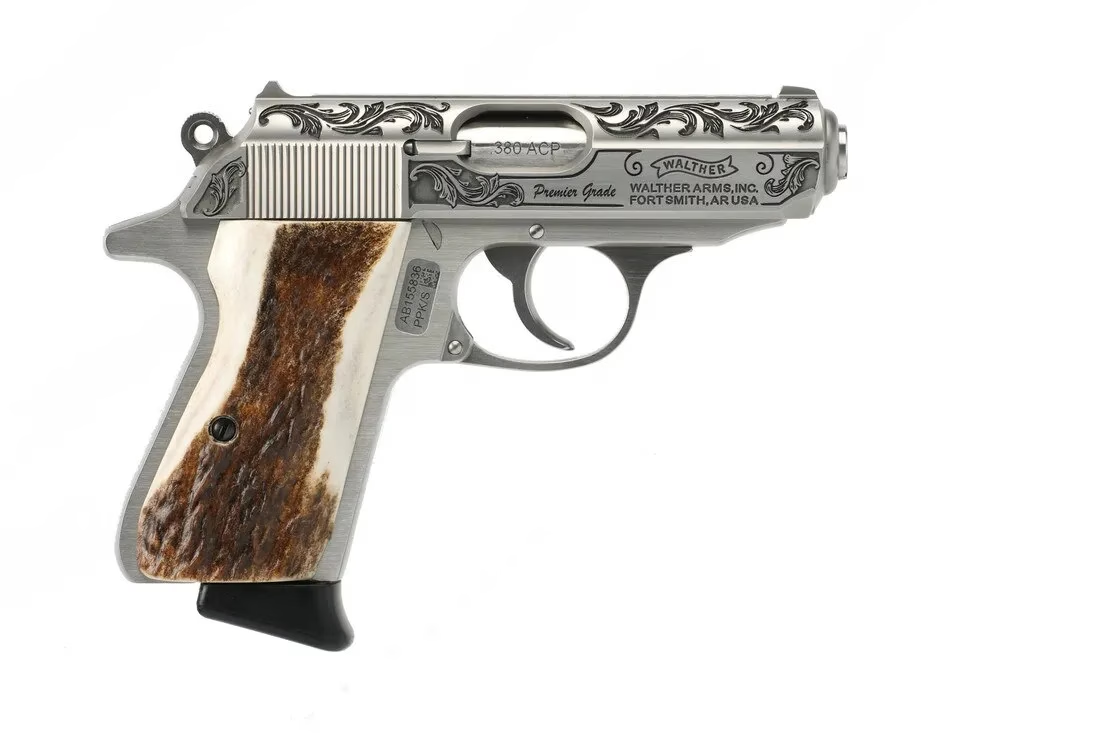
PP & PPK/s
While a modern striker-fired pistol may be the firearm of choice for personal defense for most users, there’s a certain charm to a classic hammer-fired gun. We go into the relative merits of hammer and striker firearms in our article on hammer-fired vs striker-fired pistols, so we won’t rehash it here, but if a hammer-fired gun is your preference, look no further than the Walther PP series.
The PP group of handguns consists of three distinct models: the PP, the PPK, and the PPK/s. All feature an exposed hammer, double/single action trigger, and a fixed barrel. The fixed barrel is particularly notable in a market saturated with tilting-barrel actions and makes the PP group of handguns particularly well suited for suppressed use, as they do not require Neilsen devices.
The Walther PP is the oldest of the group—the original handgun for which Walther first became famous. It’s an icon of Walther’s history, and an exceptional firearm in its own right. While the original was offered in several different cartridge chamberings, the current production model is available only in .380 and .32 ACP.
In most other respects, the modern PP remains a faithful reconstruction of the original, preserving it’s classic lines and smooth operation.
The PPK is a later variation of the PP. While the “K” is often misunderstood to be an abbreviation for “Kurtz,” (the German word for “short”) as it so often is in firearm nomenclature, it’s actually short for “Kriminal,” as the pistol was intended for use by the criminal investigation division of the police—what we might call detectives, in the United States.
As such, it is in fact a smaller version of the original PP, with a shortened barrel and grip. The smaller size made it ideal for concealment during undercover work, but also later made it popular for civilian concealed carry. It remains to this day a very capable concealed carry pistol with its small size and very slim profile.
Sadly, the PPK was banned for import into the United States in the 1960s, leading to the creation of the PPK/s, a sort of hybridized version that utilized the larger grip of the PP but the shorter slide and barrel of the PPK. This allowed the PPK/s to meet the sporting standards of US law and be legally imported.
Today, many Walther Arms pistols are manufactured in Arkansas, negating the issue of import law entirely. Despite this, the PPK/s remains a popular model, particularly as handguns with short barrels and longer grips become more commonplace with the growing shift toward appendix carry.
Steel-Frame Series
A variation of the classic PDP, the PDP Steel Frame series of handguns retains all of the features users loved about the PDP and combines them with the heft of solid steel. While the original, like so many modern pistols, uses a polymer frame, the Steel Frame models are built on precision-machined steel.
This change makes the Steel Frame models considerably heavier, which, while often thought of as a negative for daily carry, is a substantial advantage when it comes to the range. The added weight significantly cuts felt recoil, helping users run the gun flatter and faster.
The PDP Match Steel Frame also features machined lightening cuts in the slide for a shorter cyclical time, a flared magwell for faster reloads, and extended magazines, making it a compelling out-of-the-box option for competitors.

PDP-F
Another variation on the PDP, the PDP-F reimagines the original PDP as an ideal defensive pistol specifically for female users. This doesn’t just mean feminine branding or pastel colors—Walther took real feedback from women who carry and use their pistols daily to create meaningful changes to the PDP-F.
The first of those in the ergonomics. Most firearms are designed around a generalized idea of the average size of a man’s hand, allowing it to fit well enough for most. Many firearms then add interchangeable back straps or side panels to allow for some measure of customization, slightly increasing or decreasing the size of the grip.
The PDP-F takes a different path. While the unique texture of the grip is the same as the original PDP, nearly every other aspect of it has been recontoured to help it fit the hands of the average woman better. Both the grip circumference and the trigger reach have been reduced to accommodate smaller hands, with slight further adjustment made possible by interchangeable backstraps.
Walther also took the operating system back to the drawing board and implemented changes to reduce the amount of force required to rack the slide, addressing one of the more common challenges women also have when operating handguns—particularly those of a smaller size suitable for concealed carry.
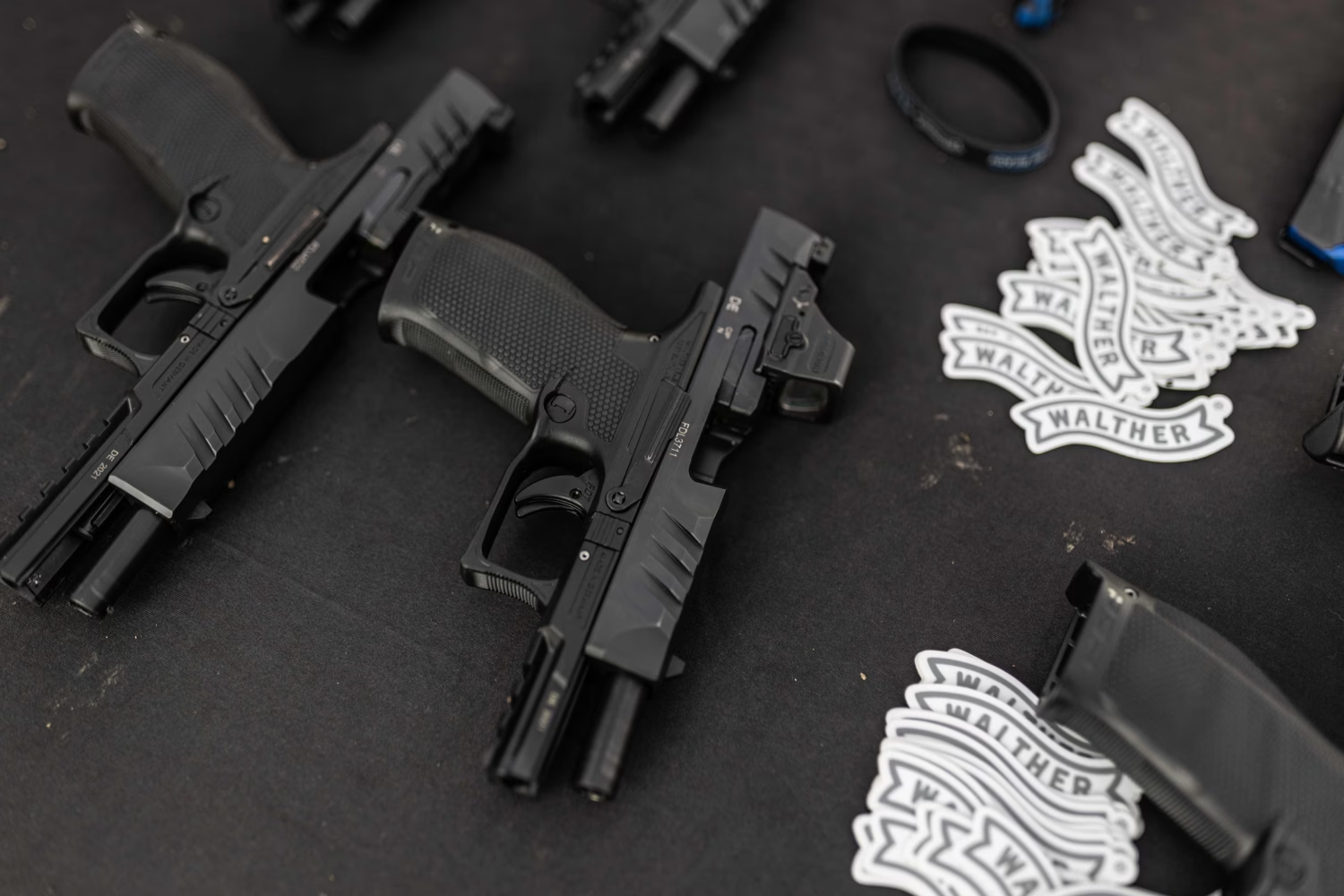
Conclusion
Walther is one of the oldest firearms manufacturers still operating and has built a legacy on quality construction and design. Even their oldest firearms, like the PP, remain popular enough today to justify manufacturing in a market saturated with options.
Their more modern offerings, meanwhile, deliver reliable, high-performing options for everything from concealed carry, to duty, to competition.
